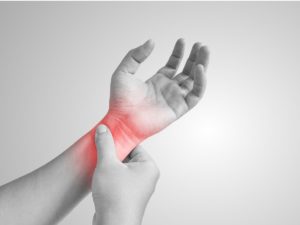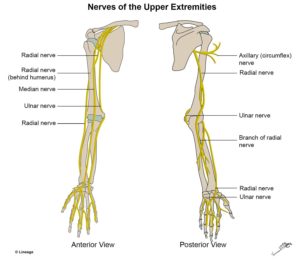Chiropractors have many different tools and techniques to apply when treating patients. Our primary tool is our hands. Used for assessments and diagnostic tests, assessing the spine for movement patterns and misalignments. Also, examining tight muscles and fixations in joints and throughout treatment; massage, mobilisation and, of course, adjustments. Manual adjusting is our go to technique when adjusting. It has great results and research to support (1), especially when combined with the other techniques we utilise here at Health House. These include soft tissue massage, trigger point dry needling, exercise rehab programs, and Clinical Pilates. (2)(3)(4) However, there may be times when other methods are more appropriate. We approach every patient individually and uniquely as everyone is different. Some people may not be able to tolerate manual adjusting. This may be due to discomfort, and too many patients watching Bruce Lee movies. In addition, more seriously, there may be recent trauma or injury to the area, co-morbidities present-such as osteoporosis, or elderly patients. The Activator is a low-force technique we can use for circumstances such as these, and something we can incorporate with other therapies to improve your pain, mobility and rehab.
What is the Activator?
The Activator is a small, hand-held instrument that delivers a high velocity but low force thrust to the spinal vertebra or joint to improve movement. By modifying the intensity and frequency of the thrust on the instrument, it tailors it specifically for the segment being adjusted. As a patient, when you first see the Activator instrument it may look intimidating. Described as a “gun”, a “stapler” or resembling a pogo stick. I always show my patients exactly what it does, demonstrate the thrust, and straight away it puts them at ease. Designed to apply the same amount of force as a manual adjustment, but focused on a more specific area. With the patient in a more comfortable position and the lower force thrust, the muscle resistance isn’t fighting against the adjustment, making the experience a more pleasant one.
When Can The Activator Be Used?
It can be used on the entire spine, as well as on other joints in the body. In addition it can also be used directly onto trigger points formed in tight muscles. It can provide beneficial results in times when manual adjusting is not appropriate. Also when a patient’s symptoms may be exacerbated through other techniques. (5)(6). Both manual spinal manipulation and activator instrument adjusting have associated benefits of reducing pain and increasing range of motion in patients (7)(8).
Feel free to ask me any questions about the Activator and how we can incorporate it into your treatment.
Resources:
-
Schiller,L 2001, ‘Effectiveness of spinal manipulative therapy in the treatment of mechanical thoracic spine pain: A pilot randomized clinical trial’, Journal of Manipulative and Physiological Therapeutics, vol 24, issue 6, pp. 394-401, Elsevier.
-
Costa, S. Chibana, Y. Giavarotti, L. Compagnoni, D., Shiono, A., Satie, J. Bracher, E., 2009, ‘Effect of spinal manipulative therapy with stretching compared with stretching alone on full-swing performance of golf players: a randomized pilot trial’, Journal of Chiropractic Medicine, vol 8, issue 4, pp.165-170, Elsevier.
-
Clark Davis, R, 2003, ‘Chronic migraine and chiropractic rehabilitation: A case report’, Journal of Chiropractic Medicine, vol 2, issue 2, pp. 55-59, Elsevier.
-
Gonzalez-Iglesias, J., Cleland, J.A., Neto, F., Hall, T., Fernandez-de-las-Penas, C., 2013, ‘Mobilization with movement, thoracic spine manipulation, and dry needling for the management of temporomandibular disorder: a prospective case series’, Physiotherapy Theory and Practice, vol 29, issue 8, pp. 586-595, National Center for Biotechnology Information.
-
Polkinghorn, B.S., 1998, ‘Treatment of cervical disc protrusions via instrumental chiropractic adjustment’, Journal of Manipulative and Physiological Therapeutics, vol 21, issue2, pp. 114-121, Europe PMC.
-
Polkinghorn, B.S., Colloca, C.J., 1998, ‘Treatment of symptomatic lumbar disc herniation using activator methods chiropractic technique’, Journal of Manipulative and Physiological Therapeutics, vol 21, issue 3, pp. 187-196, Europe PMC.
-
Wood, T.G., Colloca, C.J., Matthews, R, 2001, ‘A Pilot Randomized Clinical Trial on the Relative Effect of Instrumental (MFMA) Versus Manual (HVLA) Manipulation in the Treatment of Cervical Spine Dysfunction’, Journal of Manipulative and Physiological Therapeutics, vol 24, issue 4, pp. 260-271, The Chiropractic Resource Organisation.
-
Shearer K.A., Colloca, C.J., White H.L, 2005, ‘A randomized clinical trial of manual versus mechanical force manipulation in the treatment of sacroiliac joint syndrome’, Journal of Manipulative and Physiological Therapeutics, vol 28, issue 7, pp. 493-501,National Center for Biotechnology Information.



